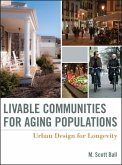Revision with unchanged content. With cheaper and more ubiquitous computing, smart spaces and responsive environments are increasingly becoming plausible and affordable. Can the profession of architecture respond to current computing technologies? Most critics agree that one of the first (most important) problems that smart homes will help to address is that of spiraling costs of elderly healthcare and care giving. But what is the problem with healthcare? Will the technologies that are designed for the urban home work in a rural setting? This book addresses the above questions through research of current problems and models of rural healthcare and through a documentation of existing studies and a focus group study at Meridian, MS. The book also examines the role of architecture (and architects) in the context of ubiquitous computing and smart spaces in rural areas.








